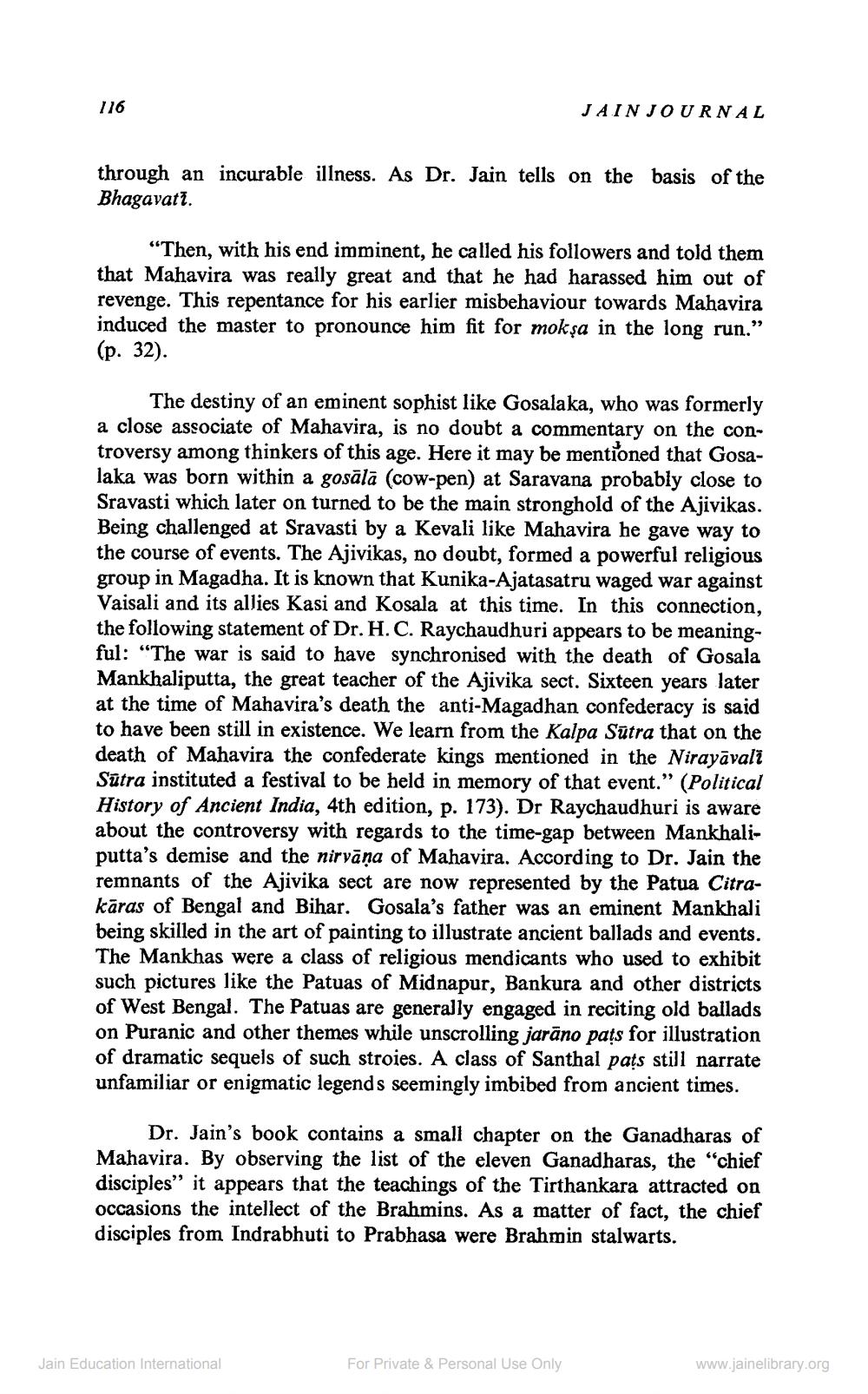Book Title: Jain Journal 1977 01 Author(s): Jain Bhawan Publication Publisher: Jain Bhawan Publication View full book textPage 5
________________ 116 JAIN JOURNAL through an incurable illness. As Dr. Jain tells on the basis of the Bhagavati. “Then, with his end imminent, he called his followers and told them that Mahavira was really great and that he had harassed him out of revenge. This repentance for his earlier misbehaviour towards Mahavira induced the master to pronounce him fit for mokşa in the long run." (p. 32). The destiny of an eminent sophist like Gosalaka, who was formerly a close associate of Mahavira, is no doubt a commentary on the controversy among thinkers of this age. Here it may be mentioned that Gosalaka was born within a gosālā (cow-pen) at Saravana probably close to Sravasti which later on turned to be the main stronghold of the Ajivikas. Being challenged at Sravasti by a Kevali like Mahavira he gave way to the course of events. The Ajivikas, no doubt, formed a powerful religious group in Magadha. It is known that Kunika-Ajatasatru waged war against Vaisali and its allies Kasi and Kosala at this time. In this connection, the following statement of Dr. H.C. Raychaudhuri appears to be meaningful: "The war is said to have synchronised with the death of Gosala Mankhaliputta, the great teacher of the Ajivika sect. Sixteen years later at the time of Mahavira's death the anti-Magadhan confederacy is said to have been still in existence. We learn from the Kalpa Sutra that on the death of Mahavira the confederate kings mentioned in the Niravāvali Sutra instituted a festival to be held in memory of that event." (Political History of Ancient India, 4th edition, p. 173). Dr Raychaudhuri is aware about the controversy with regards to the time-gap between Mankhaliputta's demise and the nirvāṇa of Mahavira. According to Dr. Jain the remnants of the Ajivika sect are now represented by the Patua Citrakāras of Bengal and Bihar. Gosala's father was an eminent Mankhali being skilled in the art of painting to illustrate ancient ballads and events. The Mankhas were a class of religious mendicants who used to exhibit such pictures like the Patuas of Midnapur, Bankura and other districts of West Bengal. The Patuas are generally engaged in reciting old ballads on Puranic and other themes while unscrolling jarāno pats for illustration of dramatic sequels of such stroies. A class of Santhal pats still narrate unfamiliar or enigmatic legends seemingly imbibed from ancient times. Dr. Jain's book contains a small chapter on the Ganadharas of Mahavira. By observing the list of the eleven Ganadharas, the "chief disciples” it appears that the teachings of the Tirthankara attracted on occasions the intellect of the Brahmins. As a matter of fact, the chief disciples from Indrabhuti to Prabhasa were Brahmin stalwarts. Jain Education International For Private & Personal Use Only www.jainelibrary.orgPage Navigation
1 ... 3 4 5 6 7 8 9 10 11 12 13 14 15 16 17 18 19 20 21 22 23 24 25 26 27 28 29 30 31 32 33 34 35 36 37 38 39 40 41 42 43 44
